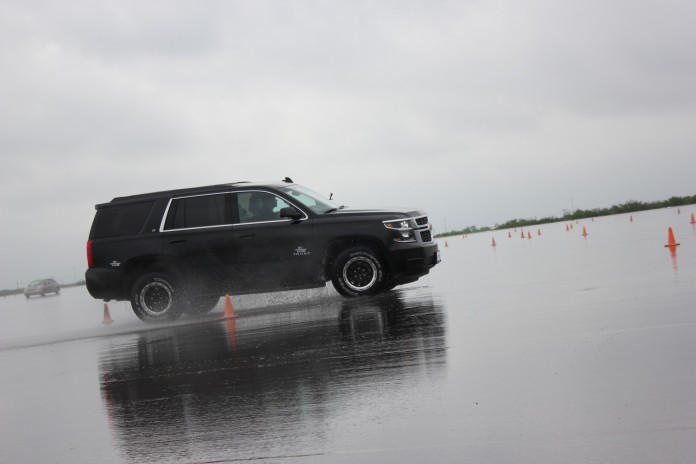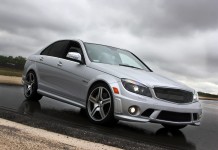Cooper Tires has held a few events over the years to let us test out new products, and they always involved performance tires. I’ve been to their track to test out sports tires for Corvettes and luxury performance rubber for things like the BMW 3 Series, but a few weeks back I got a call to try something difference. Cooper was coming out with an all-new tire that is aimed to take over the massive crossover market. The test would be a simple head to head; the new Cooper tire versus the Goodyear Wrangler tire that comes as OEM equipment on new Chevy Tahoes. I packed my bag and headed to Texas. I wanted to see if Cooper had what it takes to beat the OEMs.
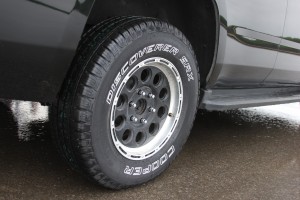
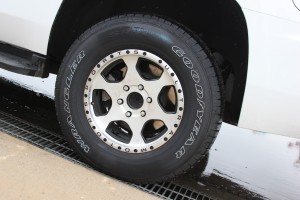
The new tire is called the Discoverer SRX and it replaces the old Discoverer tire that Cooper has been producing for a few years. The old tire was a great performer and had solid sales, but thanks to new tread compounding, new tread design, enhanced use of silica compounds and more, Cooper says this tire is leagues ahead of the old model.
Since this a tire aimed squarely at the family crowd, Cooper had us skip all the dry weather performance handling. Rather, they wanted us to focus on how things felt in the wet. It’s in foul weather conditions where your tires matter more than ever. Few regular drivers ever push the limits of their tires in the dry, but the dramatic drop in grip and traction that rain can bring means more accidents.
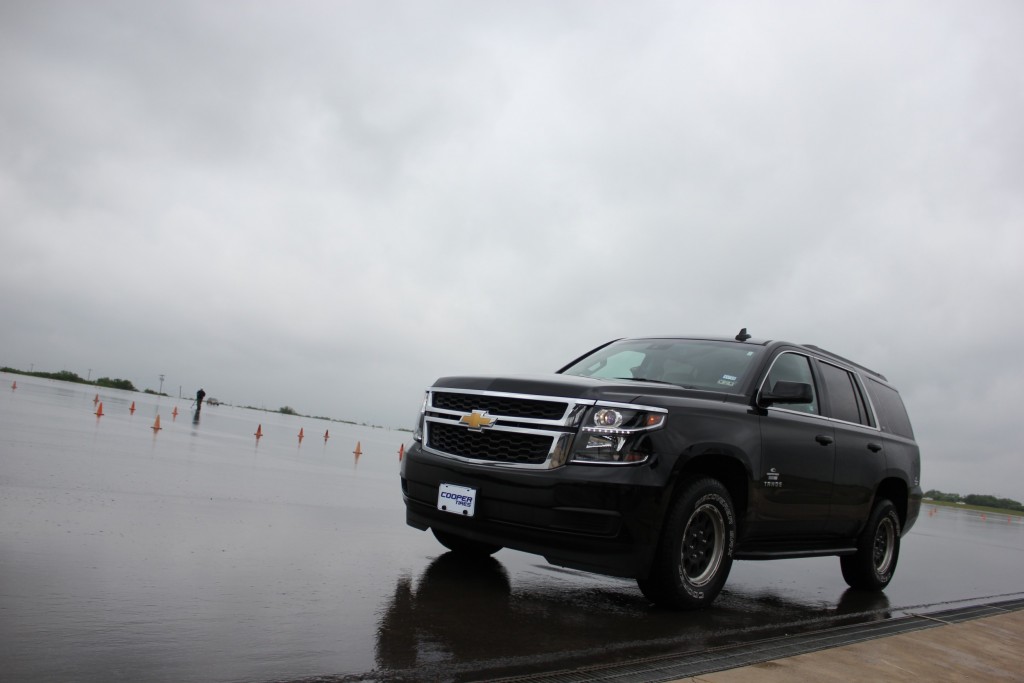
We headed over to Cooper’s 14-acre wet skidpad to start testing. We had a pair of new 2015 Tahoes, one shod in Cooper rubber, the other in stock rubber from the dealership. The test would be a simple one. We had a course setup around the skidpad, marked with cones, that consisted of a couple straights, several turns of varying severity, and one hard braking zone. We would take the factory Tahoe out for a handful of laps, immediately swap into the Cooper Tires Tahoe and go back out. No break between the drives, so you can get the best comparison.
Rather than stretch this out, I am just going to say theses tires are insanely good. They performed so much better than the factory rubber, that I called foul play. Cooper was find enough to let snag me tire pressures and tread depth ratings to ensure that there was nothing shady happening. The Cooper tires let me turn harder, accelerate faster, and most importantly, they performed dramatically better at stopping. During the hard stop on the course, before the first turn, I would count cones to pick my braking point. With the OEM Wrangler tires, at a point of four cones from the turn, I skidded completely past the turn and had to reverse the Tahoe back onto course. On the Cooper tires I could cut that distance to just 2.5 cones before I had to brake. It may not seem like that much of a difference, but 25 feet or so could be the separation between coming to a stop, or ending up in the back of a school bus.
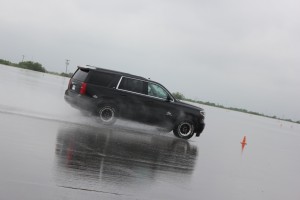
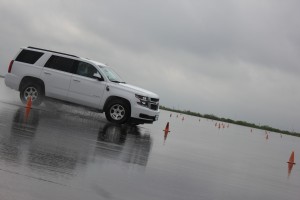
Hard data makes things like this easier to understand, so lets take a look at lap times. Cooper recorded all of our laps in both cars, and then provided us with the raw data at the end of the event. I have been crunching the numbers, and the math is pretty astounding. On the OEM tires, the average lap time for our group was 58.99 seconds. If you just take the fastest lap of each journalist, we managed a lower 57.43 time. Once we got out of the OEM car and moved to the Cooper Discoverer SRX, those lap times fell pretty dramatically. The average across all laps was a 55.16, a pretty healthy drop of 4 seconds, or nearly 10-percent compared to the OEM tire. But when we look at fastest laps, things get even more clear cut. With a total average of just 52.23 seconds per lap for our eleven drivers’ fastest, we were more than 5 seconds quicker with Cooper rubber than the Goodyear tires.
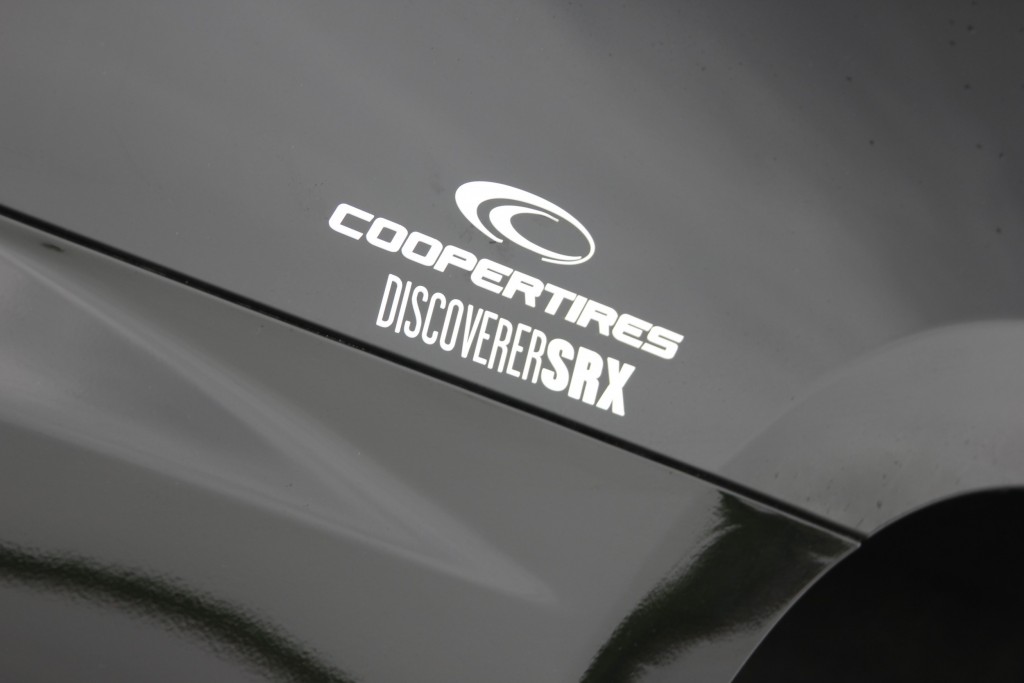
Five seconds doesn’t seem like a lot, but once again, that time points to a tire that is safer, has better grip, and better overall control. I can tell you the tires feel better all day, but this is hard data that says that every single driver that got behind the wheel of those Tahoes was faster on the Cooper rubber, and by a measurable margin. There is a lot more than smoke and mirrors here. Cooper has developed a product that is aggressively priced, and it outperforms factory equipment in every measurement we tested.
A cheaper price and better performance. It is really hard to argue with that.
[justified_image_grid]

